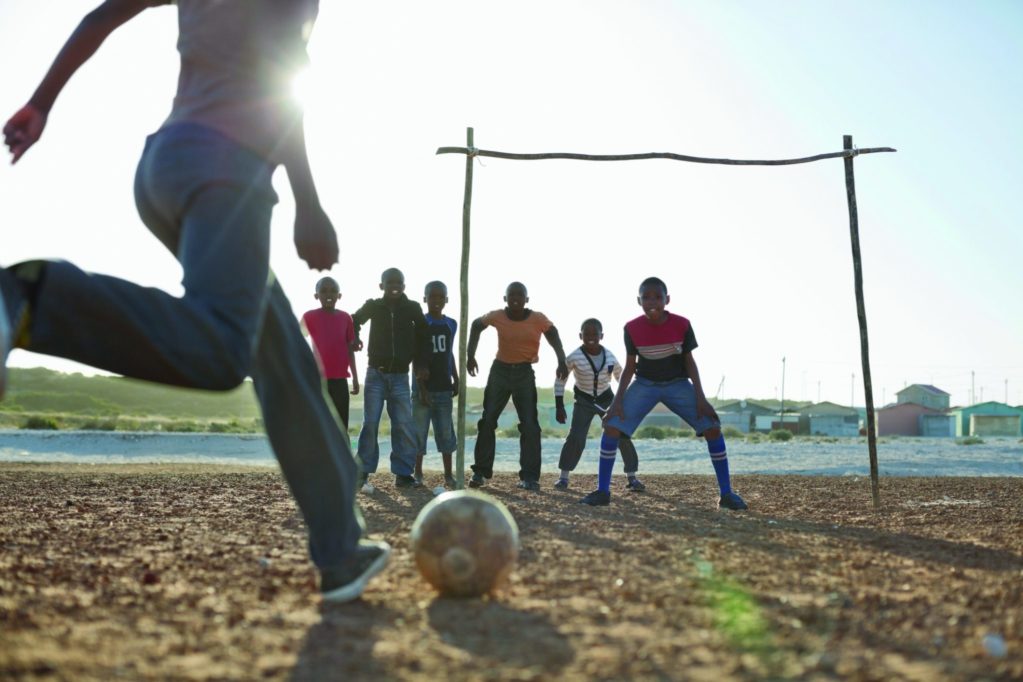Borussia Dortmund and FC Bayern Munich—these two German Bundesliga clubs surprised many by making it an all-German final at the UEFA Champions League at Wembley in May.
Bayern has reached the final three times in four years. On the other side of the coin, Dortmund embodies the change in Germany that is making this footballing nation great again.
With a little help from the directors of Dortmund’s youth team, manager Jürgen Klopp has hand-crafted a great team. Dortmund have shown that with the right people in place, sustainable success is possible. Klopp has nurtured rising talent, showing that spending lots of money is not the be-all and end-all of professional football.
The youth academy of FC Barcelona, La Masia, has more than 300 young players. It has been praised, since it opened in 2002, for being one of the best in the world. La Masia has been cited as a factor, not only in FC Barcelona’s European success, but also in Spain winning the FIFA World Cup in 2010. It trained all three finalists for the Ballon d’Or award in the same year: Andrés Iniesta; Lionel Messi and Xavi Hernández. The club scouted Messi in Argentina and signed him when he was 13.
The question of how clubs in Africa can do the same is a complex one. African players are sought-after. Every year, they sign for clubs in England, Spain, Italy and Germany.
Loading...
African players are prized for their flair and physical attributes, but have been criticized in the past, in a broad generalization, that they do not possess the technique of players from Europe. That is something that can be taught, but the general feeling is that it should be done from an early age.
It is for that reason that many European clubs now have some sort of academy set-up in Africa; be it their own facility, or in partnership with an African club. This allows them to uncover gems from the age of six and nurture them through their teens with a view to transfer them to a European academy at the age of 16.
It is a long-term investment that bears little fruit. Only one in 10 players end up in Europe—a number that varies from country to country. This process has received both praise and criticism. The praise is for the opportunities it gives young footballers through professional careers in Europe. The criticism: it is seen as a depletion of Africa’s scarce resources in return for little.
The reality is that these academies do not come cheap. Most clubs in Africa cannot afford a truly professional academy set-up, with world-class training facilities and coaches, without the patronage of a team in Europe. Any amount of money and expertize is good for the African game.
The success of African clubs, in setting up their own structures, has been limited; it has come more by fluke than design.
Perhaps the greatest example is the Asec Abidjan Academy in Cote d’Ivoire that produced a golden generation of stars. The academy is known as the crown jewel of African football. It was founded by Roger Ouégnin and Frenchman Jean-Marc Guillou 20 years ago.
The two saw enormous natural talent among the club’s youngsters, but little tuition outside of football. The students at the academy are given a football education, and are also taught maths, history, geography, physics, French, English and Spanish.
The students live in dorms during the week and have two training sessions a day, while getting top-notch medical care. Graduates include Bonaventure Kalou; Didier Zokora; Emmanuel Eboué; Gervinho Kouassi; Salomon Kalou, Koffi N’dri, known as Romaric, Didier Ya Konan, and the Touré brothers, Yaya and Kolo.
It has been an enormous success and continues to develop top players with a simple recipe—bring structure and organization to the lives of these youngsters, then let their natural talent shine.
The question of why there are not many more such successful set-ups around the continent probably comes down, largely, to money. There certainly is a fair share of fantastic institutions, but financial issues aside, it is also a matter of the desire from club owners and consistency in what you are trying to achieve.
You cannot have a top program for two years, then let standards slip. It is also a question of expertise in some parts of the continent; football is a universal language that can be taught easily.
Running a professional academy is a huge undertaking and requires skills that go far beyond the football pitch. These are not always readily available—certainly at a cost that makes them affordable—and as with any business, an academy will live or die by virtue of the people running it. There is no quick route to success, you have to be in it for the long haul.
If you look at Ajax Amsterdam’s association with Ajax Cape Town in South Africa, that is now 14 years old, it has unearthed only two players—Steven Pienaar and Thulani Serero. Despite this, Ajax remains committed, for the moment, because there is always the promise of another Pienaar. It is this long-term thinking that needs to apply.
With Zambia, whenever the Chipolopolo camp is in Johannesburg, they always play practice games against a South African Youth Academy called Africa Sport that is run by former Bafana player Harold Legodi. He is doing a great job and has gathered real talent.
It’s always encouraging to see players being groomed. Chipolopolo have played with them four or five times and it is heartening to see skill that surely should lead to a bright future.
If you open an academy tomorrow and start with players at under-7 level, it may take you a decade before you get your first professional player. It is a long-term investment for which few have the patience.
We need more academies on the continent but we need good ones. That will be the key to growing the game in Africa.
Loading...
